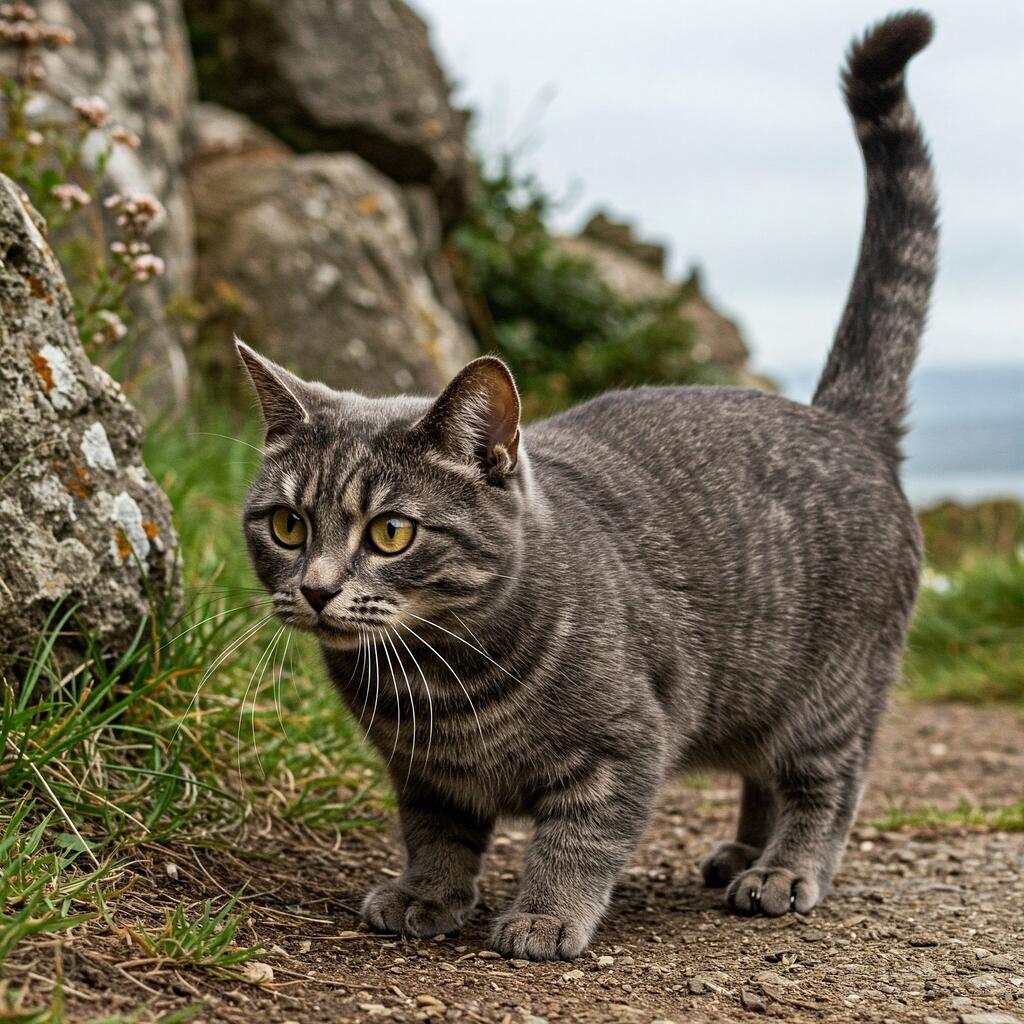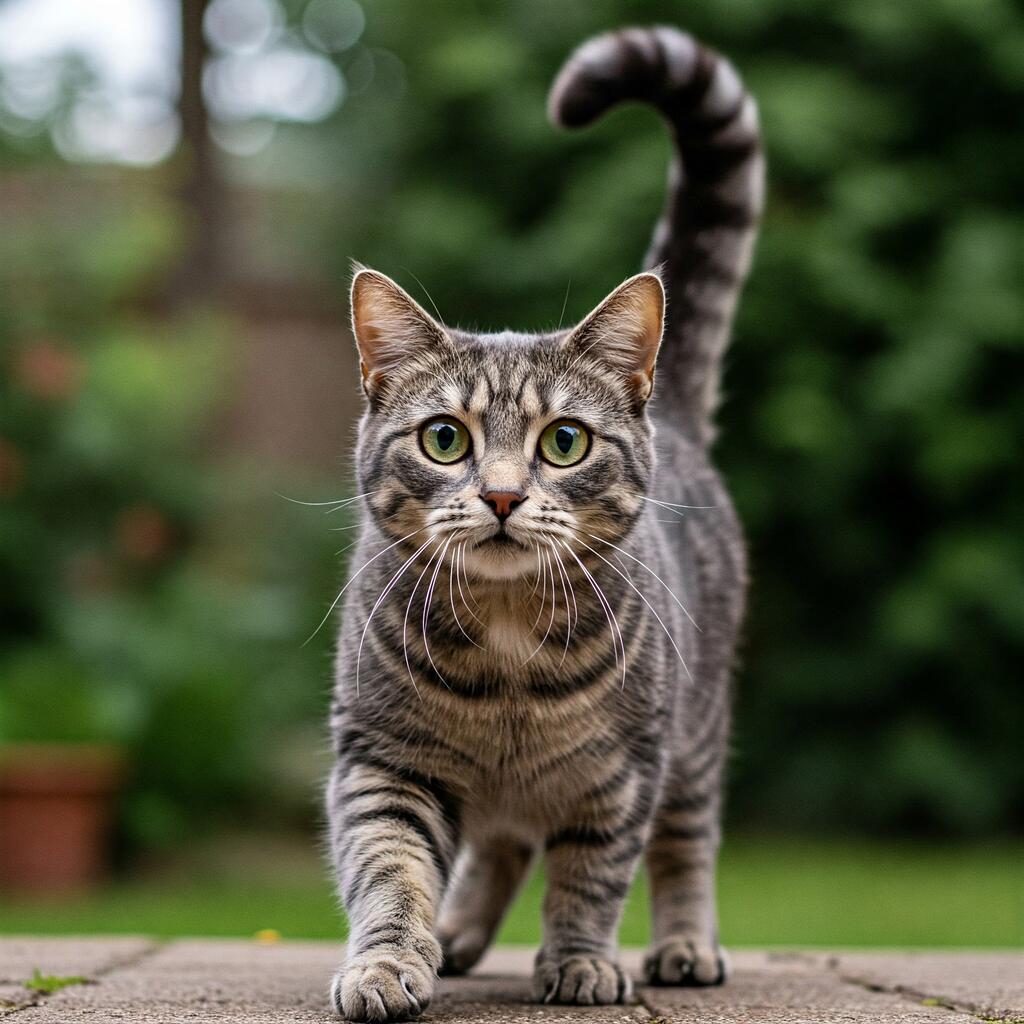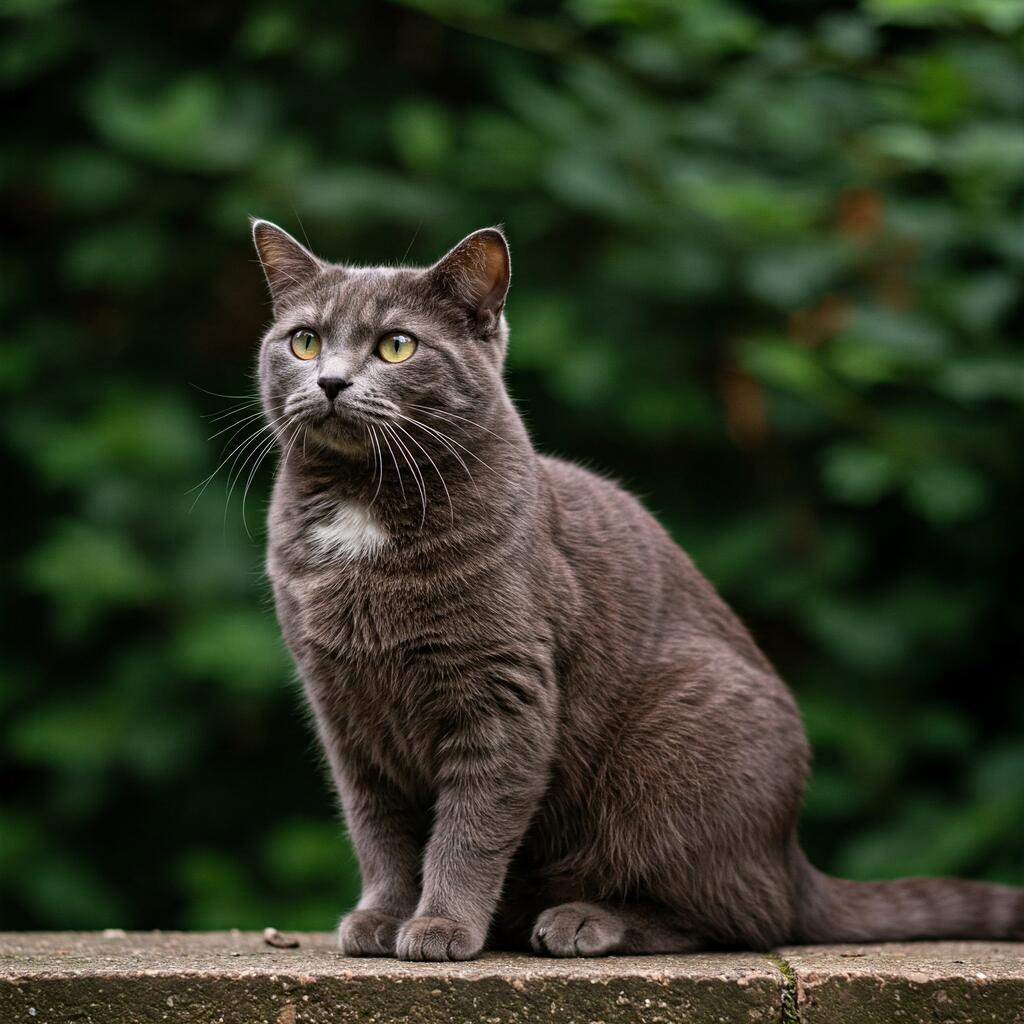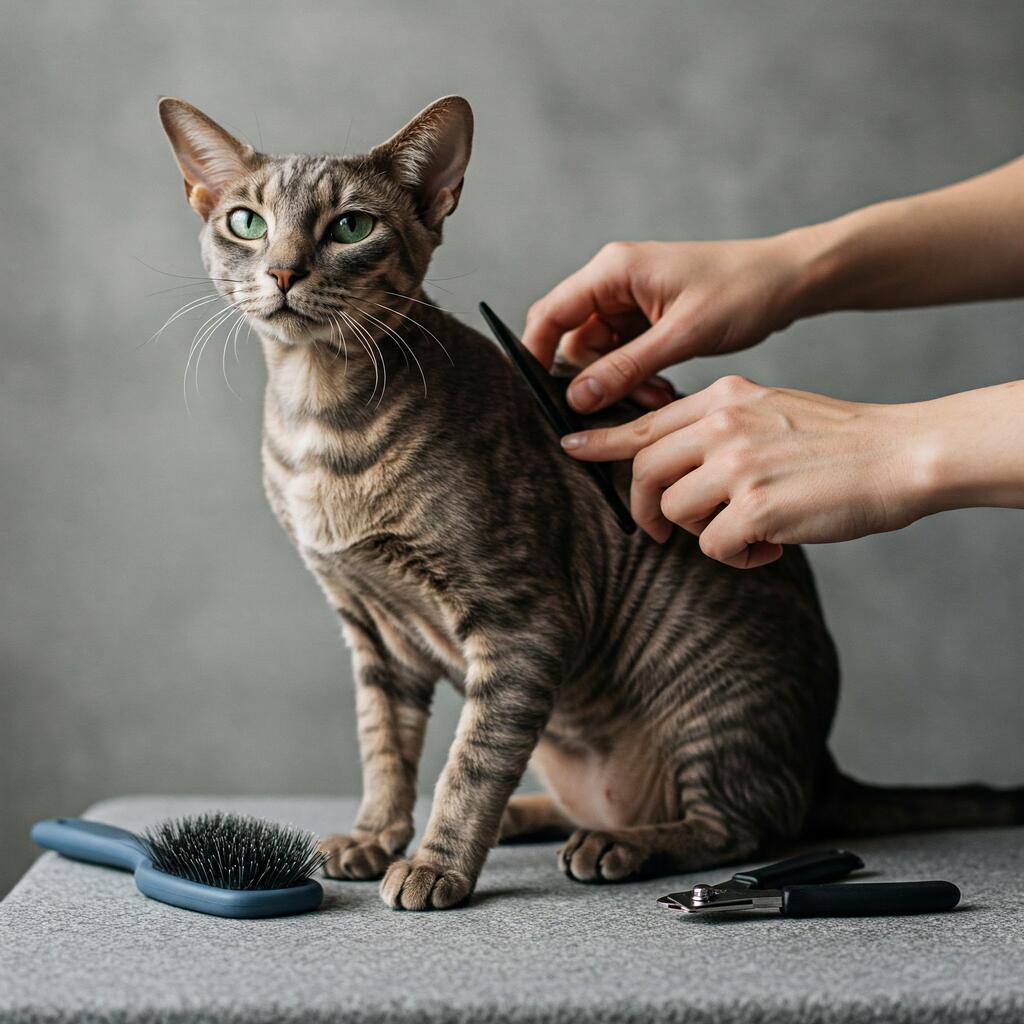
Manx Cat: The Hopping Hunter from the Isle of Man
The Cat Manx is none other than a short-haired Cymric Cat. They have the same origin, the Isle of Man, which is an island in the Irish Sea where these cats, given the remoteness of this island from the mainland, have crossed spontaneously without any interference from other breeds, giving rise to two species of cats whose main characteristic is that they are either completely tailless or have a small tail no longer than a few centimetres.
In ancient times specimens of this species have been found in Malaysia, Russia and China and it is thought possible that they reached the Isle of Man on ships from the Far East. However, given the geographical isolation and the scarcity of domestic cats, the tailless gene was preserved and spread to the island.
There are many legends handed down about the origin of these cats, all of them very picturesque. In one, it is said that when Noah was ready to set sail with the ark, this tardy cat got on board at the last moment and his tail got stuck in the door so that it never grew back from then on. In another, it is said that the warriors of the Isle of Man cut off a kitten's tail at every victory, tails which they then placed on their helmets as a sign of glory and good fortune. All legends without a shred of foundation.
Character of the Cat Manx

The Cymric Cat is a quiet, peaceful and very sociable cat. It gets along well with practically everyone, both with other animals and with children and elderly people. He is very intelligent, learns easily and can even learn a few things independently.
He does not like to be alone for long periods, so if he has to be left alone for most of the day, it would be good to provide him with a companion, another cat or even a dog. It also gets along well with large dogs. He loves to play, which is why he is also suitable for families with children, with whom he shows great patience. He is able to assess various situations at the specific moment, showing that he is a truly fearless cat.
It is a lively cat that loves to play, run, climb and is also an excellent hunter, but it does not disdain the comfort and warmth of home, behaving as a docile and calm cat.
Appearance of the Cat Manx

Its characteristic besides the short coat is the lack of a tail, just like its cousin Cymric. However, there are four types of Cat Manx, just like the Cymric, precisely because of the tail. The Rumpy, where the tail is practically absent altogether. The Riser, which has 1 to 3 vertebrae from the sacrum and this makes a small elevation at the height of the tail perceptible. The Stumpy, which has from 1 to 3 caudal vertebrae and therefore has a small piece of tail and finally the Longy, which has a medium-length tail.
The coat is very thick and shiny. The coat colours can be slate-grey, blue, black, cinnamon, red or white, the latter being very rare, and can be plain, striped, two-tone or three-tone. It has a very thick and fine undercoat. Finally, the eyes can be of all colours, but related to the colour of the coat.
Care and health of the Cat Manx

This breed, having a hair kept fairly short, does not require any special care. On the contrary, it is generally the same that licks itself completely independently to clean and remove any excess hair. It does, however, shed hair, albeit moderately, and it would therefore be useful to brush it at least once a week to remove any excess dead hair, to prevent the cat from ingesting too much by cleaning itself.
It is rather greedy so it is good to keep an eye on the amount of food it eats as it has a certain genetic predisposition to gain weight.






















